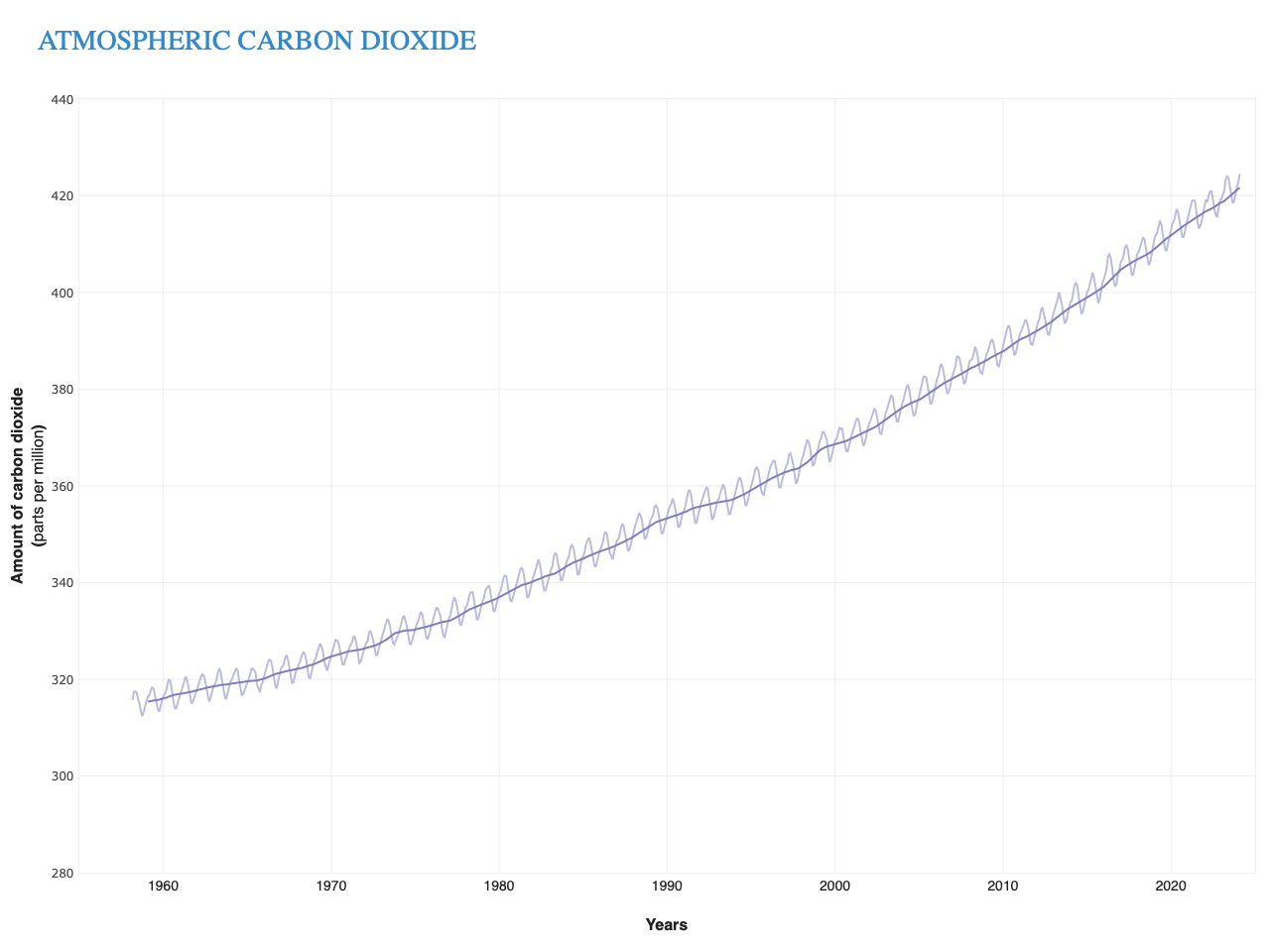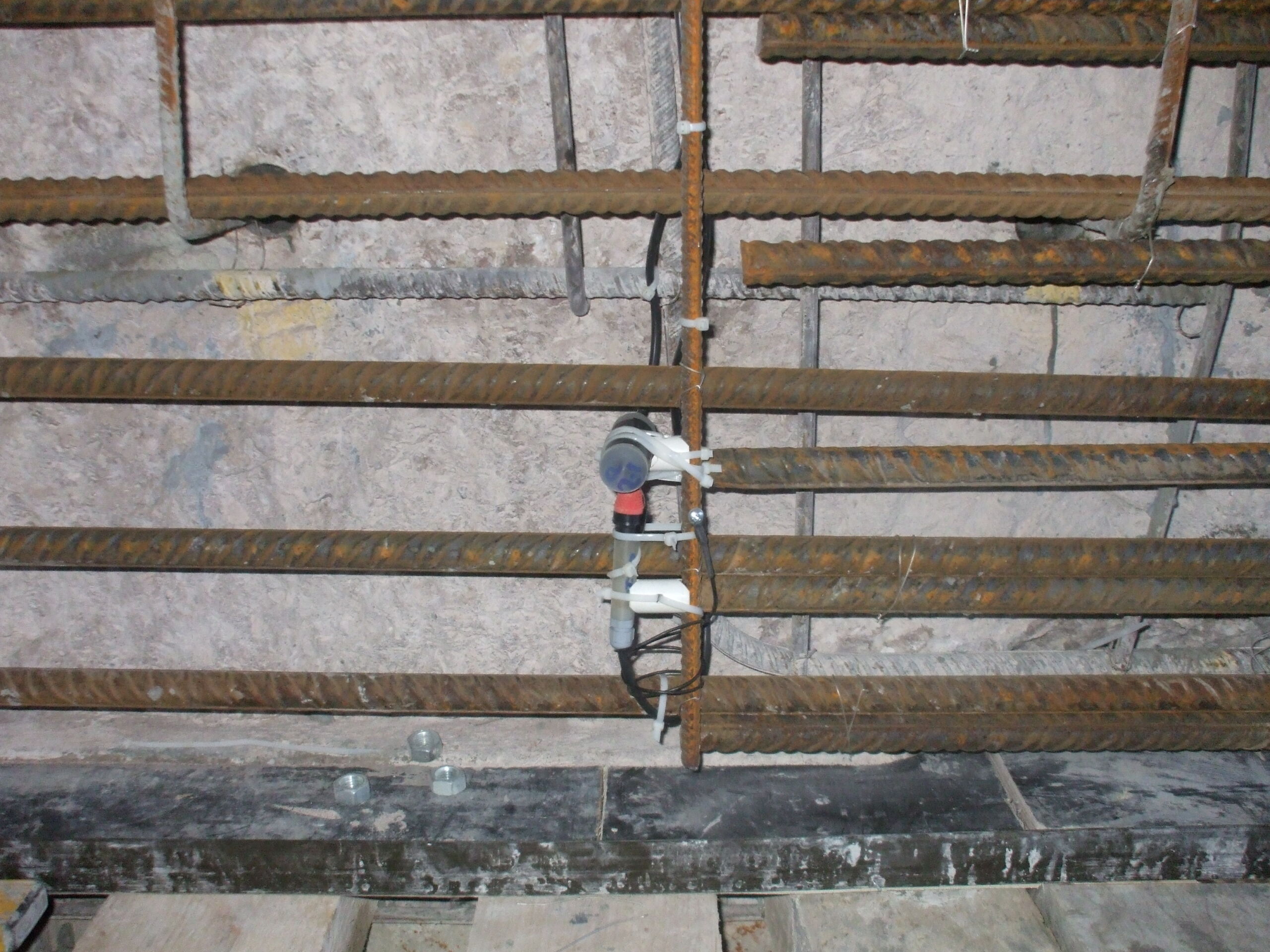A call for an industry route-map: Designing reinforced concrete for climate change resilience
A call for an industry route-map
Designing reinforced concrete for climate change resilience
Chris Atkins, Mott MacDonald
Nigel Fraser, BUILDOFFSITE
18 March 2024
It is widely accepted that climate change is caused by the increasing level of atmospheric CO2 which has increased by 30% since the ISO equations were developed for the assessment of corrosion rates[1]. This trend is continuing and is expected to do so until at least 2040. Climate change has multiple impacts which can impact the resilience of structures.

Figure 1: Measured atmospheric carbon dioxide levels at Mauna Loa Observatory | Credit: NOAA https://www.climate.gov
Climate change has multiple impacts which can impact the resilience of structures. Higher levels of atmospheric carbon dioxide accelerate carbonation of concrete, which can result in corrosion of steel reinforcement bars. Higher temperatures lead to more extreme weather events, which may both damage structures and drive moisture into existing cracks creating corrosive results. This is particularly significant when structures are close to the sea or exposed to anti-icing salts (such as bridges and car parks). However, increasing temperature can reduce corrosion due to the relationship with atmospheric humidity, as incorporated into the ISO’s corrosion rate calculations[2].
The relationship between corrosion and climate change is complex, as described in detail in the Institute of Corrosion’s Technical Article “Climate change and corrosion”2, and it will continue to change over the coming decades. The context will always be significant, however there is clearly a case for reviewing structural design codes for climate resilience.
Technologies exists today to tackle the corrosion issue, but the industry is not yet adopting them widely. Non-corrosive fibres are widely used in some applications. The more we consider the whole life carbon and whole life cost of structures, the clearer the case for adoption of alternatives. New non-corroding reinforcement products such as basalt and glass rods are on the market, but currently can have limitations in terms of the manufacture of rebar cages. Impressed current cathodic protection, that has been well proven in the restoration market, is relatively straightforward to install in new structures and uses very little energy. Corrosion initiation and progression can be monitored and controlled remotely. The Internet of Things and open-standard networking systems enable corrosion management to be securely integrated into wider structural and building management systems. This has the potential to move the focus away from time limited design lives (eg 120 years) to designing for indefinite life. It looks particularly interesting for protection of higher risk zones within structures.
 Image: Bridge cross head in marine exposure conditions with concrete cover removed during rehabilitation | Credit: C-Probe Systems
Image: Bridge cross head in marine exposure conditions with concrete cover removed during rehabilitation | Credit: C-Probe Systems
This leads to the question of “should we be changing the way we specify designs for steel reinforced concrete?”. In 2022, BUILDOFFSITE published Achieving sustainable resilience in new precast concrete structures [3] in which a range of options were considered.
Offsite, precast reinforced concrete products are readily adaptable to incorporating protection systems as the required ICCP components (anodes, cathodes, sensors, and cables) may be integrated into the manufacturing process. This has been facilitated further by the creation of at least one modularised system designed to clip onto rebar. Concrete remains an incredible, flexible material for construction. If we are going to continue to invest in it with its significant carbon footprint, let’s make sure we get the most out of it using low carbon technology.
BUILDOFFSITE calls on interested parties to get together and produce an industry route-map for designing reinforced concrete for climate change resilience.
References
- ATKINS, C. Climate change and corrosion, Institute of Corrosion, Technical Article, PP28-30, September/October 2022
- ISO 9223:2012 Corrosivity of atmospheric environments
- ATKINS, C, DAVIS, FRASER N, S, HIRST, C, JONES, G and LAMBERT, P (2022) Achieving sustainable resilience in new precast concrete structures. Taking precast concrete to a new level, BUILDOFFSITE, London, UK www.buildoffsite.com
